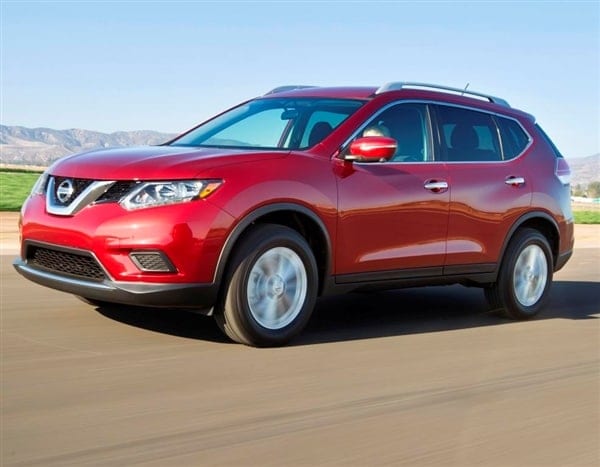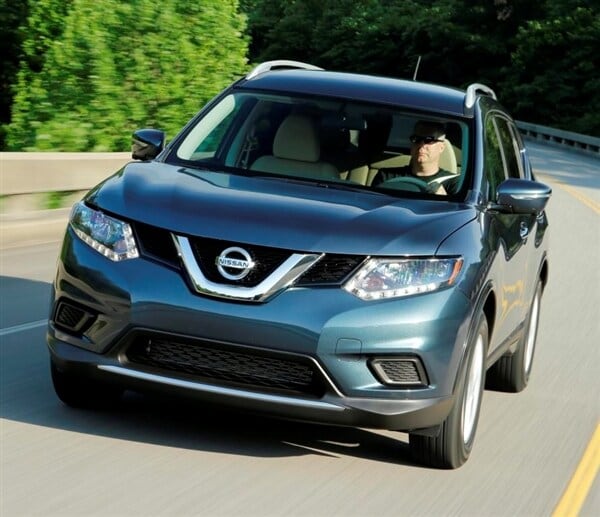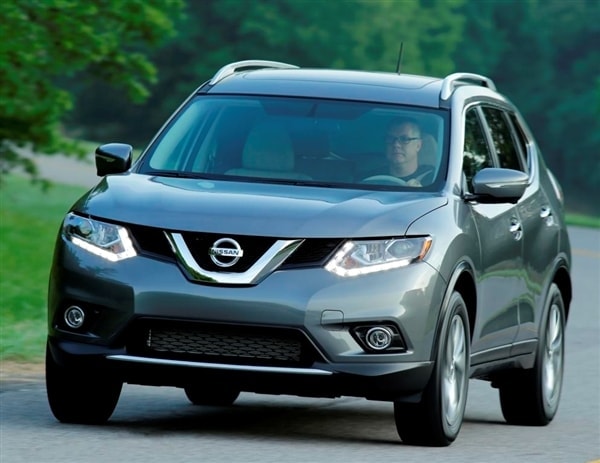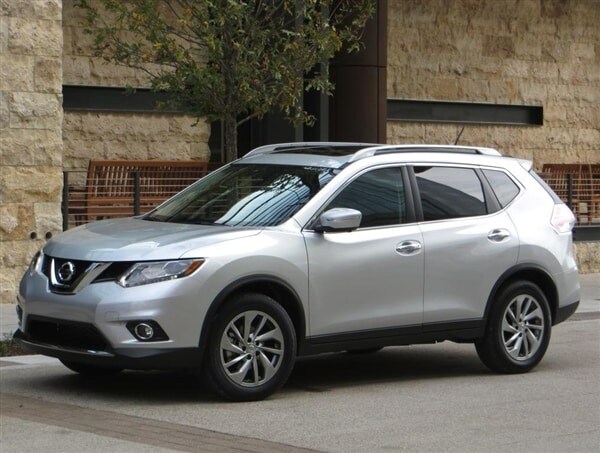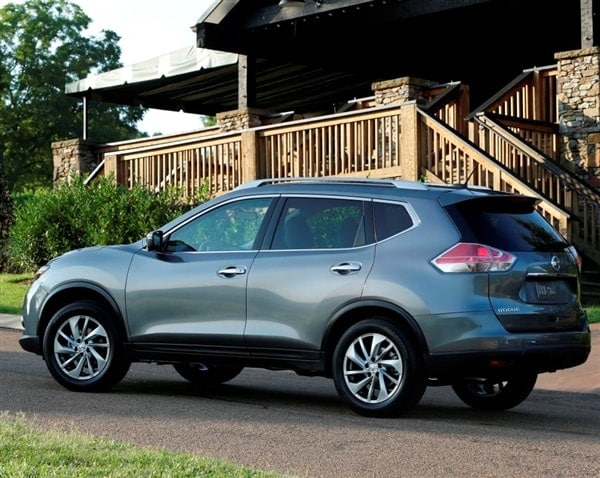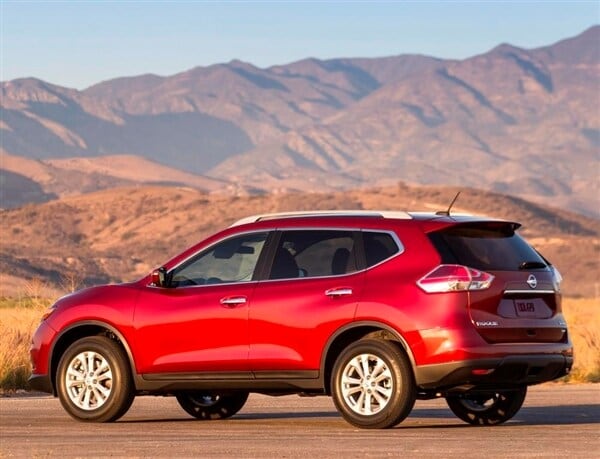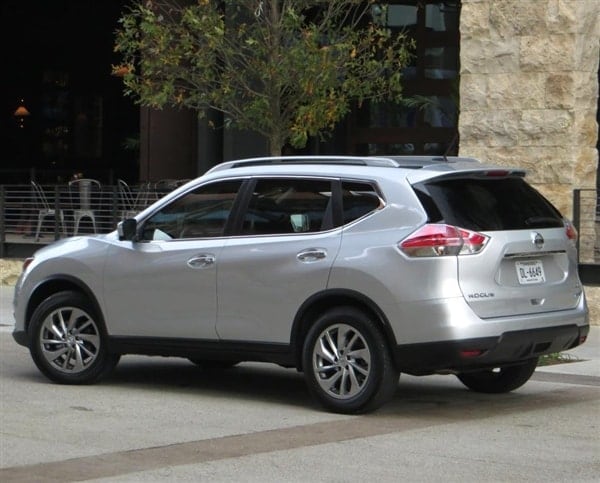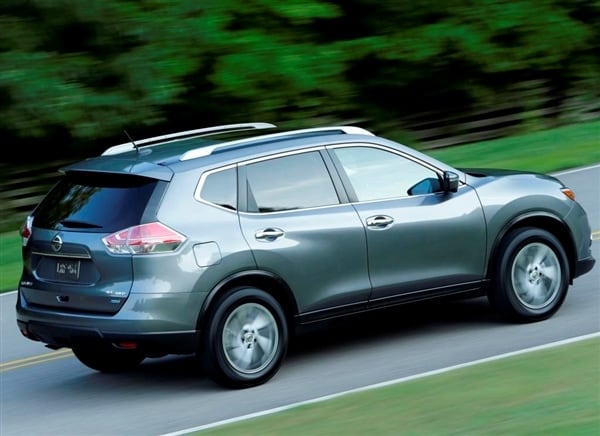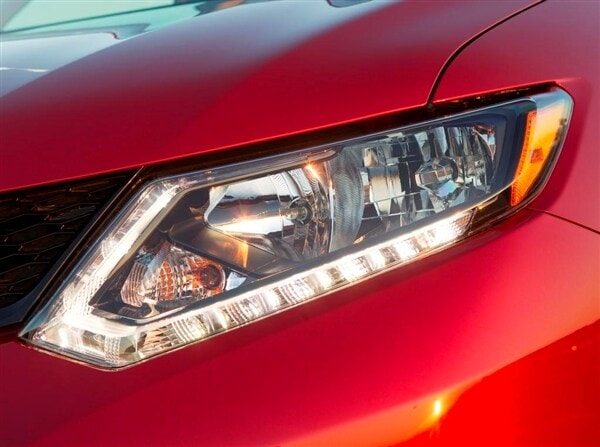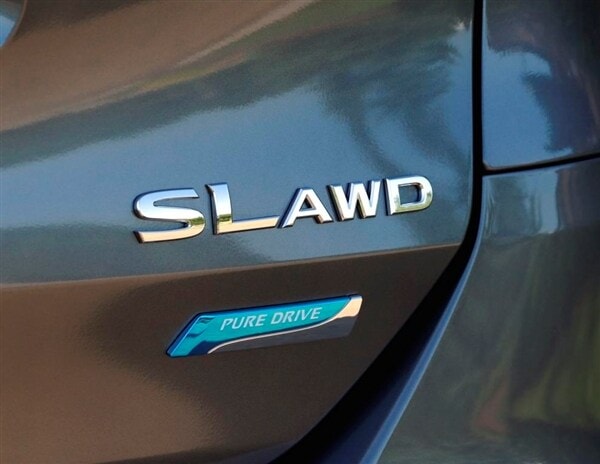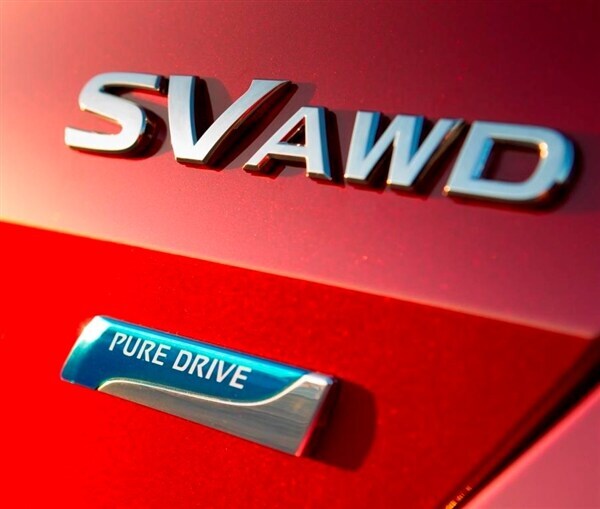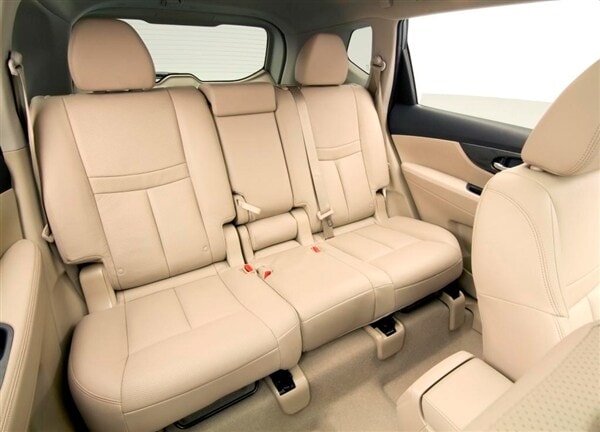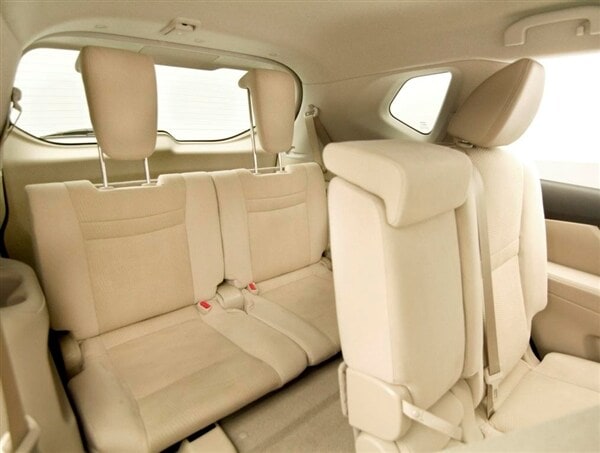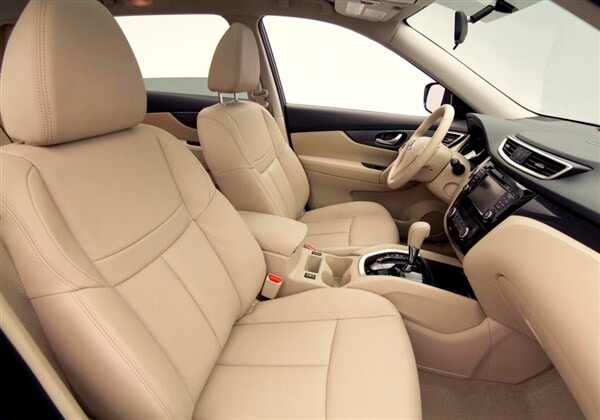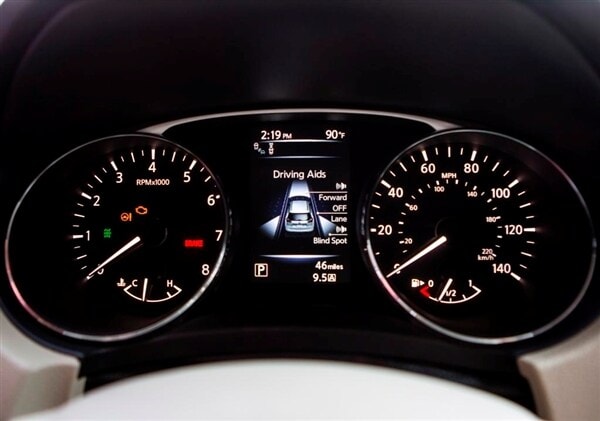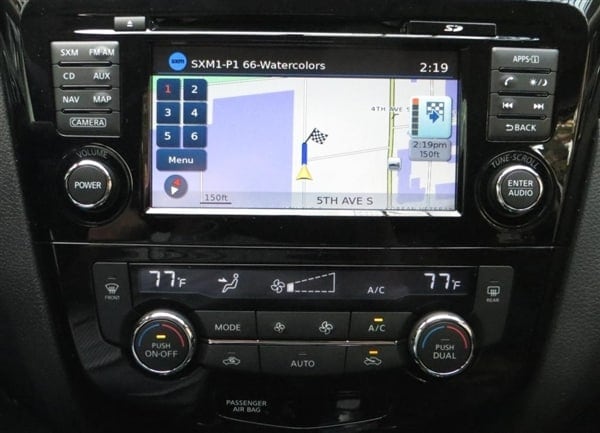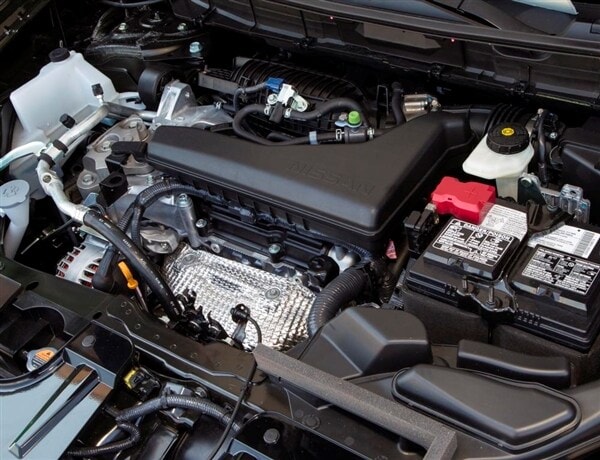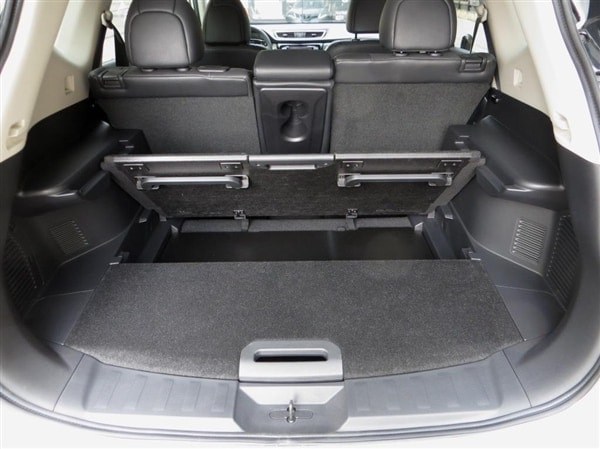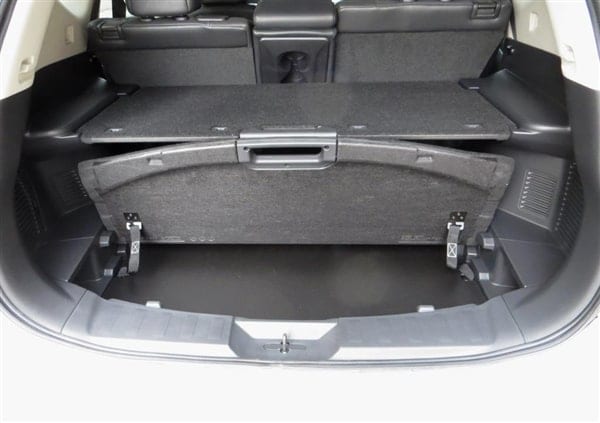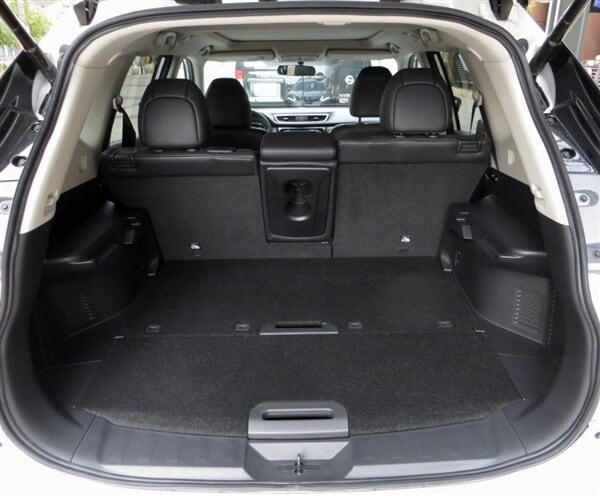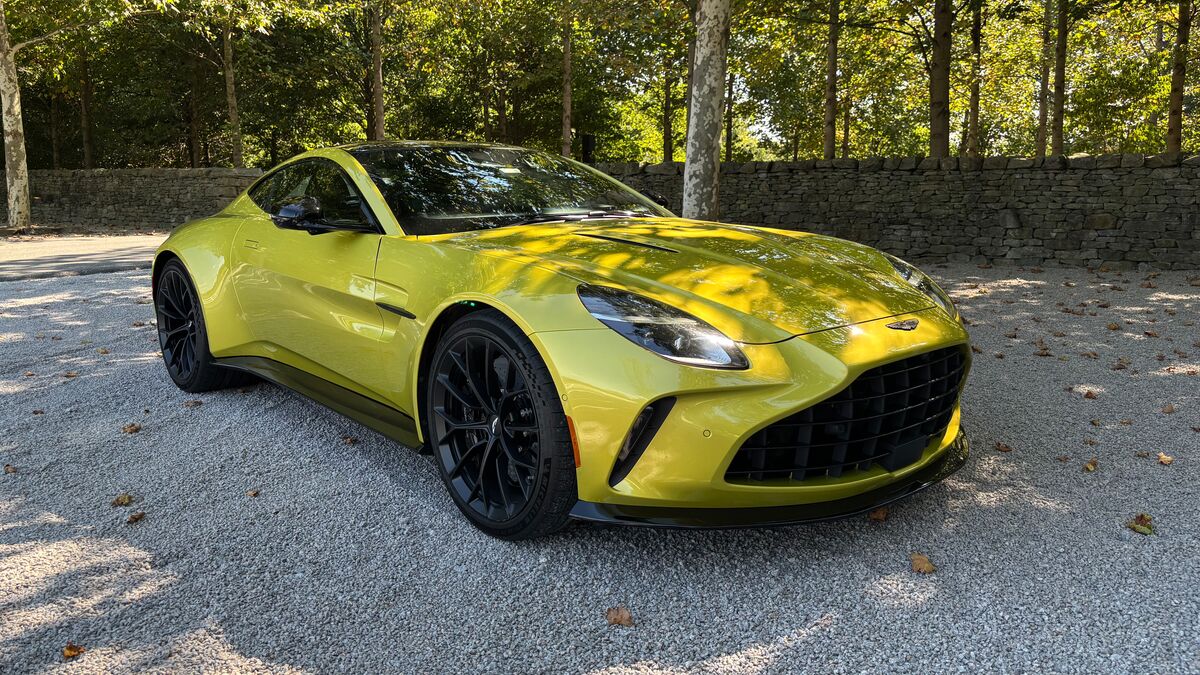Unveiled at the Frankfurt Auto Show last month and on sale in mid-November, the fully redesigned 2014 Nissan Rogue has undergone a major engineering rethink as it moves into its second generation. Although the platform architecture is completely different, this still-compact crossover SUV retains all of the fundamental elements that helped the original to become Nissan‘s second-best-selling model in the U.S. Fortified with even more creature comforts, enhanced technology, improved dynamics and better fuel economy, the now-made-in-America Rogue has gained new appeal on every level which should help its efforts to grab market share from prime rivals like the Chevy Equinox, Ford Escape, Honda CR-V and Toyota RAV4. We got our first chance to drive Nissan’s new compact crossover earlier this week in Nashville, and came away quite favorably impressed.
Unlike its Sentra-based Gen I predecessor, the 2014 Rogue is the first vehicle to be based on the new Common Module Family (CMF) architecture co-developed by Nissan and Renault. A bit shorter and taller than the current model, the new Rogue is almost two inches wider and has a 0.6-inch longer wheelbase, all of which combine to give it a more substantial stance. Wrapped in bolder but more aerodynamically efficient sheetmetal that’s complemented by full underbody fairings and even a Nissan-first muffler spoiler, the new Rogue also sees its coefficient of drag dip from 0.36 to 0.33. In addition to more elegant trim detailing and premium touches like standard LED running lights, the 2014 Rogue’s option list also includes new upscale items like LED headlights, a panoramic sunroof and a power rear liftgate.
Inside, the Rogue’s cabin has grown in style and scale with lots more soft-touch surfaces, increased people/storage space and better accommodations in the available S, SV and SL trims. Even the S boasts a full range of power assists, an electroluminescent instrument cluster with a programmable 5.0-inch TFT Color Driver Assist Display, multifunction steering wheel, air conditioning, Nissan Connect basic with a 5.0-inch center display, Bluetooth, iPod/USB/AUX inputs, a RearView monitor and more. Stepping up through the model hierarchy adds things like push-button starting, dual-zone climate control, Nissan Connect Apps and a power driver’s seat at SV level, while SL models come with leather upholstery, Bose premium audio, Quick Comfort heated seats, Nissan connect with Navigation and a 7.0-inch display plus an Around View Monitor.
Also: The Best SUVs Under $25,000 for 2013
The 2014 Rogue’s new front buckets incorporate the same fatigue-fighting “anti-gravity” design as those in the Altima and offer equally laudable measures of comfort and support. Moving from the previous 60/40 design to a 40/20/40 split, the Rogue’s new rear bench also gains 9.0 inches of fore/aft travel which makes it a suitable realm even for the proverbial 6-footers. No such good words for the Rogue’s new — and thankfully optional — third-row seat that’s being offered for the first time in the S and SV trims. This marketing-driven 50/50 “benchette” lacks LATCH hardware for mounting a child seat and is destined to have zero appeal for anyone with legs. It also compromises the Rogue’s outstanding “Divide-N-Hide” cargo system that offers 18 different configurations in all 5-passenger models — more than enough to ensure optimum use of its 32.0 cu ft rear bay, whose capacity rises to 70.0 cu ft with the rear seat folded. Even the loading/unloading functions have been made easier thanks to the large liftgate. About the only sacrifice in the mix is that the Rogue’s maximum tow rating has been trimmed from 1,500 to 1,000 pounds.
All versions of the new Rogue are powered by a revised version of the existing 2.5-liter 4-cylinder engine that still develops 170 horsepower and 175 lb-ft of torque but now features the Continuously Variable Timing Control System on its exhaust as well as on its intake valves and has a slightly higher compression ratio. Those changes help raise its overall efficiency by 4-5 percent. The engine is backed by the latest generation of Nissan’s Xtronic CVT transmission with enhanced D-step logic that emulates discrete gear ratios and a Sport mode. With 40-percent less internal friction, it improves fuel economy by 10 percent compared to the previous unit. Coupled with its other optimized design elements, the 2014 Rogue boasts an 18-percent bump in overall fuel economy, netting the front-drive models a class-best 33 mpg highway figure and earning all-wheel-drive Rogues a 32 mpg comparative stat, a number equalled only by the Subaru Forester.
The underpinnings on the new Rogue also got a similar performance-pumping reboot for 2014, bolstering the fully independent front strut/rear multilink design with new and more precise electric power steering and enhancing the existing stability/traction control systems with a suite of new “confidence-inspiring dynamic technologies.” Integrated across the entire Rogue lineup, they include Active Trace Control that improves tracking through corners and smoothes engine response under acceleration, Active Engine Braking that helps reduce pedal effort when stopping, and Active Ride Control that automatically applies the brakes and/or adjusts engine torque to minimize pitching motions whenever the vehicle hits a bump at speeds in excess of 25 mph. While all 2014 Rogues feature Hill Start Assist, AWD models also come with Hill Descent Control. Buyers seeking the ultimate in driver-assist tech can opt for a Premium Package on the SL, a grouping that includes Forward Collision Warning, Blind Spot Warning and Lane Departure Warning, as well as a class-exclusive Moving Object Detection system that uses the 360-degree Around View monitor.
Also: 10 Best Luxury SUVs of 2013
So how does it all work out on the road? Quite well, actually. While lacking the outright acceleration and handling edge of say a Ford Escape with its optional 240-horsepower turbocharged 4-cylinder engine, the new Rogue proved to be quiet, comfortable and more than energetic enough to deal with everything from city slogs to freeway cruising. The CVT is commendably well-mannered, the suspension delivers a solid balance of compliance and control and the Rogue’s combination of highly legible instruments, well-positioned switchgear, nicely contoured seats and new connected capabilities makes what was an already solid entry significantly more competitive in one of the hottest segments in the market.
Although Nissan claims the redesigned Rogue will still hold a price advantage over its key competitors, the wide-ranging enhancement program does impact its bottom line. Starting price for a 2014 Rogue S FWD is $23,350 — which is $2,180 more than its 2013 counterpart — while a top-line Rogue SL AWD is set to open at $30,280 and command $32,270 fully loaded. Realizing that some buyers won’t be willing or able to make the step up, the automaker is doubling down on its best-selling crossover SUV for 2014 and plans to continue offering one value-oriented version of the existing Rogue alongside of the new Gen II model. Dubbed the Rogue Select, this mono-spec front-drive model will have an MSRP “below $20,000” when it goes on sale in January.
Popular at KBB.com
10 Best SUVs Under $25,000
Your 12 Midsize Sedan Choices
First Pics: All-new Cars for 2014
